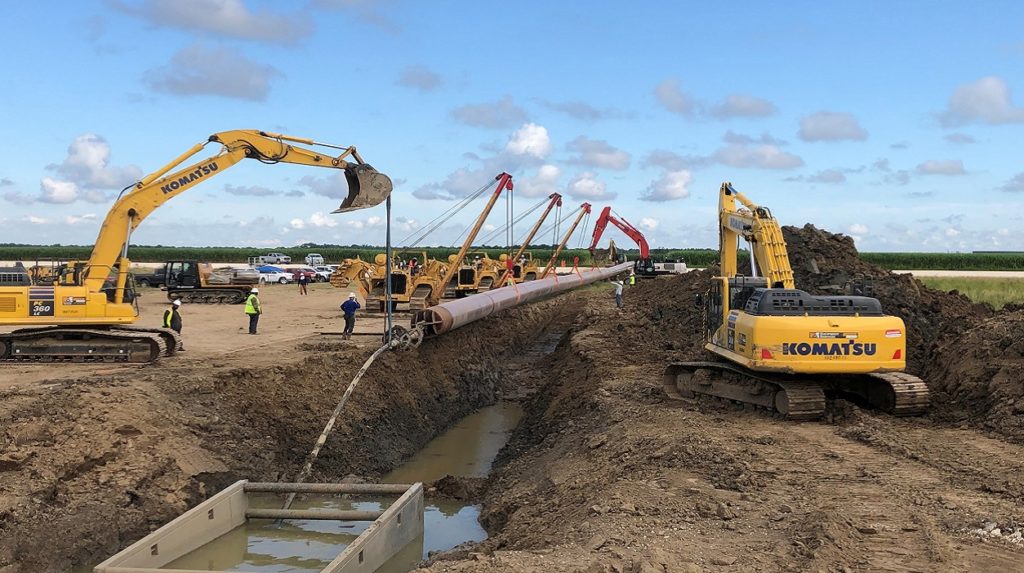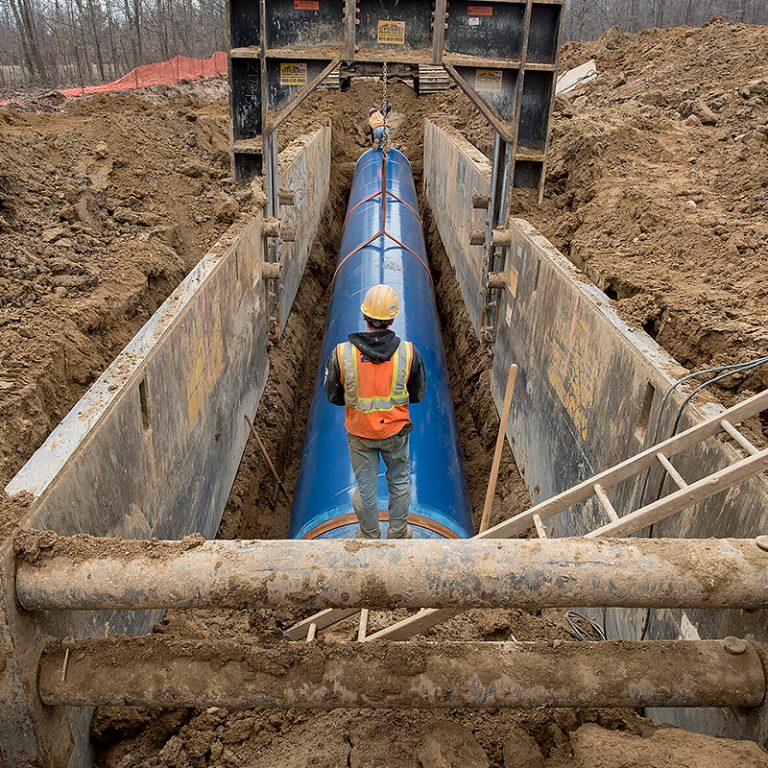Are You Compliant? Local Building Codes Through Creek Pipe Company
Wiki Article
A Deep Dive Into Pipes Installation: Essential Aspects and Considerations for Effective Projects
Reliable pipe installation is an essential element of engineering jobs. It involves a variety of variables, from material choice to exact sizing and style. Each decision can significantly affect the system's efficiency and durability. Understanding these parts is crucial for preventing pricey blunders. Creek Pipe roustabout. As groups navigate via the intricacies of installation, numerous vital considerations arise that warrant focus. What are the pivotal aspects that can make or break a piping project?Comprehending Pipe Products and Their Applications
When choosing pipe materials, one should think about the certain applications and ecological problems they will face. Various materials offer unique buildings that satisfy different requirements. For circumstances, PVC is light-weight and immune to corrosion, making it perfect for water distribution systems. Alternatively, steel pipelines offer strength and toughness, appropriate for high-pressure applications but might need protective coverings to stop rust.Copper pipes are preferred for plumbing due to their antimicrobial properties and convenience of installation, while polyethylene is typically used in below ground applications due to its flexibility and resistance to cracking.The option of product likewise depends upon temperature level extremes, chemical direct exposure, and installation location. For high-temperature applications, products like CPVC or PEX can be helpful. Ultimately, recognizing the features and restrictions of each material help in making informed choices that boost system efficiency and longevity.Relevance of Correct Sizing and Layout
Proper sizing and layout of pipes are essential for guaranteeing suitable flow prices and minimizing pressure loss. These elements additionally play a considerable function in establishing the compatibility of materials utilized in the installation. An organized technique to sizing and style can considerably enhance the effectiveness and long life of a piping system.Effect on Circulation Rates
Flow rates in piping systems are seriously influenced by the sizing and design of the pipelines. Correctly sized pipes guarantee that the liquid can relocate successfully, decreasing turbulence and maximizing flow capacity. Extra-large pipes can result in decreased flow rates, while small pipelines may restrict flow, causing raised rubbing and prospective obstructions. The design must also consider elements such as pipe product, interior surface level of smoothness, and design, as these contribute to the overall efficiency of fluid transportation. Additionally, the arrangement of installations and connections within the system can influence flow rates. Careful interest to pipe sizing and style is necessary for enhancing circulation efficiency in any type of piping installation project.Pressure Loss Factors To Consider

How can pressure loss substantially influence the performance of a piping system? Stress loss is a vital factor that can significantly reduce the efficiency of fluid transport systems. When pipelines are poorly sized or created, excessive stress loss may take place, bring about reduced circulation rates and boosted power usage. This inefficiency can cause higher operational expenses and prospective system failures. Correct sizing and style are important to minimize stress loss, guaranteeing that fluid dynamics remain suitable throughout the system. Designers should very carefully take into consideration variables such as pipe size, length, and product to achieve an effective equilibrium. Ultimately, resolving pressure loss throughout the design stage can improve integrity and durability, making it crucial for successful piping tasks.
Material Compatibility Factors
Stress loss is not the only variable that can influence the efficiency of a piping system; material compatibility additionally plays a considerable role in general performance. Making sure that the materials made use of in a piping system work with the liquids they will certainly move is vital. Different materials can react detrimentally to numerous chemicals, resulting in corrosion, destruction, or contamination. This can eventually endanger the integrity of the system and affect its longevity. Furthermore, proper sizing and design are essential to fit thermal expansion and contraction, which can better affect product efficiency. Reviewing factors such as temperature, pressure, and chemical composition is essential in selecting appropriate materials, thus enhancing system dependability and minimizing maintenance expenses in the long term.Strategies for Accurate Pipe Installation
Exact pipe installation is crucial for guaranteeing system efficiency and durability. A number of strategies can boost the precision of this process. Initially, cautious measurement is essential; installers ought to use high quality devices such as laser degrees and tape measures to establish the specific lengths and angles required. Next off, appropriate pipe cutting strategies, like making use of a pipeline cutter rather than a hacksaw, guarantee tidy sides that help with far better connections. Additionally, using positioning devices, such as pipe jigs, can especially enhance precision throughout setting up. It is likewise advisable to consider thermal growth; enabling ample spacing and growth joints can prevent future imbalances. Ultimately, the installation group ought to adhere to manufacturer guidelines to abide by certain recommendations related to each pipe type. By carrying out these techniques, the probability of leaks and system failures lowers, eventually adding to a much more reliable piping system.Making Certain Pipe Placement and Support
Proper alignment and support are essential to the honesty and efficiency of any piping system. Imbalance can result in enhanced anxiety on joints, possible leaks, and decreased efficiency. To ensure correct positioning, it is important to make use of appropriate tools such as laser degrees and positioning assesses. These instruments help achieve exact positioning, ensuring that pipelines are set up based on style specifications.Support systems should be designed to suit thermal expansion and tightening, in addition to the weight of the pipes and their components. Choosing the best sort of supports, wall mounts, and brackets is vital. Each should be installed at defined periods to avoid drooping or unnecessary stress and anxiety on the pipes. Regular evaluations adhering to installation can assist identify any imbalances or signs of insufficient assistance. By prioritizing positioning and support, one can greatly boost the resilience and performance of the piping system.Usual Installation Blunders to Prevent

Testing and Examination for Top Quality Assurance
The installation procedure may appear full, detailed screening and assessment are vital to making sure the lasting integrity of a piping system. Various approaches are used to examine the integrity of the installation, including stress tests, aesthetic assessments, and non-destructive screening (NDT) techniques. Pressure tests validate that the system can withstand operational conditions without leaks, while aesthetic evaluations aid identify any noticeable flaws in the pipelines or joints. NDT methods, such as ultrasonic or radiographic testing, provide insights right into the product stability without endangering the system.Additionally, documenting the screening results is vital for future recommendation and conformity with industry requirements. This paperwork serves not only as a quality control step yet also as a legal guard. Eventually, a thorough screening and inspection method adds to the total security and efficiency of the piping system, guaranteeing it fulfills the required performance requirements over time.Maintenance Tips for Resilient Pipe Solutions
Keeping a pipeline system requires regular inspections and monitoring to recognize possible problems prior to they escalate. Implementing reliable cleaning strategies is likewise vital for avoiding accumulation that can impede efficiency. With each other, these methods add to the long life and dependability of the piping infrastructure.Regular Inspections and Monitoring
Regular inspections and monitoring are crucial for making certain the long life and efficiency of pipe systems. Normal evaluations can help identify prospective concerns such as leaks, deterioration, or blockages before they escalate right into substantial problems. Carrying out a routine for regular assessments permits the early discovery of deterioration, enabling timely repairs. Tracking stress levels and flow why not try these out rates can also offer beneficial insights into system performance, guaranteeing that any kind of anomalies are attended to quickly. In addition, making use of advanced technologies, such as infrared electronic cameras or ultrasonic testing, can boost the examination process by giving in-depth details concerning pipe conditions. Inevitably, consistent tracking and evaluations contribute to the reliability and durability of pipe systems, decreasing the risk of pricey repair services and electric wheel loader downtime.
Reliable Cleansing Techniques
Effective cleansing methods are important for preserving the integrity and performance of pipe systems. Frequently set up maintenance, such as flushing systems with water, assists get rid of debris and accumulation. For more stubborn blockages, professionals usually advise hydro jetting, which uses high-pressure water to tidy pipe interiors extensively. Chemical cleaners can likewise be used however should be selected meticulously to avoid destructive pipes. Furthermore, using tools like pipe electronic cameras can assist in determining problem areas and making sure effective cleaning. Preserving appropriate drain and avoiding the disposal of unsafe substances down pipelines even more add to durability. Overall, consistent cleaning methods not just improve performance yet also reduce the threat of pricey repair work in the future.Regularly Asked Questions
What Are the Labor Costs Associated With Pipe Installation Projects?
Labor costs for pipe installation jobs differ extensively, affected by factors like job intricacy, neighborhood wage prices, and needed skills (Creek Pipe near me). Typically, these expenses can range from $50 to $100 per hour, relying on the workforce includedExactly How Do Neighborhood Rules Affect Pipe Installation Practices?
Neighborhood regulations greatly influence pipe installation practices by developing safety requirements, product specifications, and installation approaches. Conformity with these guidelines guarantees task safety, environmental defense, and adherence to regional codes, inevitably influencing overall task success and expenses.What Equipment Are Vital for Pipe Installation?
Crucial tools for pipe installation include monkey wrench, cutters, and installations. Additionally, sealants, gauging tapes, and levels assure precision and resilience. Proper equipment advertises efficiency and adherence to safety standards during the installation process.How Can Weather Issues Effect the Installation Process?
Weather significantly affect the installation procedure, as severe temperature levels, rain, or wind can affect product integrity, employee safety, and project timelines. Appropriate preparation and organizing are essential to reduce these potential difficulties throughout installation.Are There Service Warranties for Set Up Pipe Equipments?
Service warranties for mounted pipe systems usually differ by manufacturer and installation service provider. Normally, they cover issues and craftsmanship for Full Report a given duration, ensuring the system's integrity and providing satisfaction to the homeowner.Report this wiki page